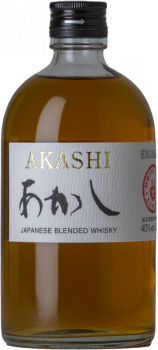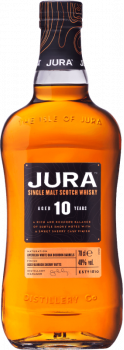Showing 1 to 16 of 48 (3 Pages)
Buy Whisky
Whisky is made by distilling fermented malt from grains of different cereals, especially barley and rye. From its subsequent aging in oak barrels, this spirit is born. This process, although born in Scotland and Ireland, spread throughout the world, resulting in a very wide range of styles. In our selection, you can find examples from different countries, such as Scotland, Spain and Japan, at a wide variety of prices.
This process, although it was born in Scotland and Ireland during the 15th century, over the years it was refined and spread throughout the world, resulting in a very wide range of styles. While each distillery has its own roadmap that gives each whisky its particular stamp in terms of aromas and flavours, the distillation process involves a number of general stages.
The stages of whisky making
After the cereal grains - whether barley, rye, corn or wheat - are removed, they are left to soak for a long time so that they can absorb the water and germinate their roots. It is through this process that the enzymes in the barley are activated to become starch and soluble sugars.
This germination is interrupted weekly to roast the barley or green malt in an oven at a temperature of no more than 70°C, so that the enzymes are not destroyed by the excess heat. The smoke that is released will give the whisky its aroma. You can even roast the malt over peat fires, if you want to give it a smoky taste.
Once dry, the malt is ground in a mill to become a kind of coarse flour called grist. It is then mixed with hot water for mashing in three stages, each with a higher water temperature, until it reaches boiling point. The purity of this water is essential to guarantee the quality of the whisky.
It is during this stage that the starches are transformed into sugar, leaving as a result a liquid called must. This is cooled down to about 20°C, then yeast is added and it goes through a fermentation process.
It is during this stage that the yeast transforms the sugar into alcohol and produces other compounds, called congeners, which give the whisky its flavor. It also generates carbon dioxide which, together with the alcohol, form a mixture called wash, a liquid with an 8 to 9% alcohol content.
The whisky distillation process
The distillation process is done by means of a still, an apparatus used to separate the liquid from its component substances by first evaporating through heating, and then through condensation by cooling.
After the wash is distilled twice, it obtains its high alcohol content of about 70%. Subsequently, the ageing stage is carried out. The longer the whisky is matured, the more golden and smoother it will be on the palate.
Whisky is not matured in the bottle, but only in the barrel. Both the ageing time and the type of wood in the cask, with its great impact on both taste and colour, will depend on each distillery.
In the case of Scotch whisky, for example, this process must take at least three years in oak wood casks. The longer it remains in contact with this wood, the more sweetness and colour the whisky will acquire from the cellulose, notes of vanilla from the lignin, astringency and fragrance from the tannins, and finally, fruity characteristics from the oxidation. Some pure malts can be aged for up to seventy years.
Different types of whisky
The different types of whisky are defined, mainly, according to their composition. Firstly, we can find the pure malt or single malt whisky, which is made in a single distillery, only from malted barley, water and yeast.
On the other hand, pure grain whisky is produced from unmalted barley or other malted cereals, such as corn or wheat. This whisky is made in a continuous still, which gives it a much lighter flavour.
Finally, the blended whisky is derived from a mixture and subtle combination of the two previous ones, that is, from a pure malt whisky with another grain whisky. Currently, almost nine out of ten bottles of Scotch whisky sold around the world are blends.
- ;
- ;
-
- ;
- ;
- ;
- ;
-
- ;
-
- ;
Buy Whisky
Whisky is made by distilling fermented malt from grains of different cereals, especially barley and rye. From its subsequent aging in oak barrels, this spirit is born. This process, although born in Scotland and Ireland, spread throughout the world, resulting in a very wide range of styles. In our selection, you can find examples from different countries, such as Scotland, Spain and Japan, at a wide variety of prices.
This process, although it was born in Scotland and Ireland during the 15th century, over the years it was refined and spread throughout the world, resulting in a very wide range of styles. While each distillery has its own roadmap that gives each whisky its particular stamp in terms of aromas and flavours, the distillation process involves a number of general stages.
The stages of whisky making
After the cereal grains - whether barley, rye, corn or wheat - are removed, they are left to soak for a long time so that they can absorb the water and germinate their roots. It is through this process that the enzymes in the barley are activated to become starch and soluble sugars.
This germination is interrupted weekly to roast the barley or green malt in an oven at a temperature of no more than 70°C, so that the enzymes are not destroyed by the excess heat. The smoke that is released will give the whisky its aroma. You can even roast the malt over peat fires, if you want to give it a smoky taste.
Once dry, the malt is ground in a mill to become a kind of coarse flour called grist. It is then mixed with hot water for mashing in three stages, each with a higher water temperature, until it reaches boiling point. The purity of this water is essential to guarantee the quality of the whisky.
It is during this stage that the starches are transformed into sugar, leaving as a result a liquid called must. This is cooled down to about 20°C, then yeast is added and it goes through a fermentation process.
It is during this stage that the yeast transforms the sugar into alcohol and produces other compounds, called congeners, which give the whisky its flavor. It also generates carbon dioxide which, together with the alcohol, form a mixture called wash, a liquid with an 8 to 9% alcohol content.
The whisky distillation process
The distillation process is done by means of a still, an apparatus used to separate the liquid from its component substances by first evaporating through heating, and then through condensation by cooling.
After the wash is distilled twice, it obtains its high alcohol content of about 70%. Subsequently, the ageing stage is carried out. The longer the whisky is matured, the more golden and smoother it will be on the palate.
Whisky is not matured in the bottle, but only in the barrel. Both the ageing time and the type of wood in the cask, with its great impact on both taste and colour, will depend on each distillery.
In the case of Scotch whisky, for example, this process must take at least three years in oak wood casks. The longer it remains in contact with this wood, the more sweetness and colour the whisky will acquire from the cellulose, notes of vanilla from the lignin, astringency and fragrance from the tannins, and finally, fruity characteristics from the oxidation. Some pure malts can be aged for up to seventy years.
Different types of whisky
The different types of whisky are defined, mainly, according to their composition. Firstly, we can find the pure malt or single malt whisky, which is made in a single distillery, only from malted barley, water and yeast.
On the other hand, pure grain whisky is produced from unmalted barley or other malted cereals, such as corn or wheat. This whisky is made in a continuous still, which gives it a much lighter flavour.
Finally, the blended whisky is derived from a mixture and subtle combination of the two previous ones, that is, from a pure malt whisky with another grain whisky. Currently, almost nine out of ten bottles of Scotch whisky sold around the world are blends.





